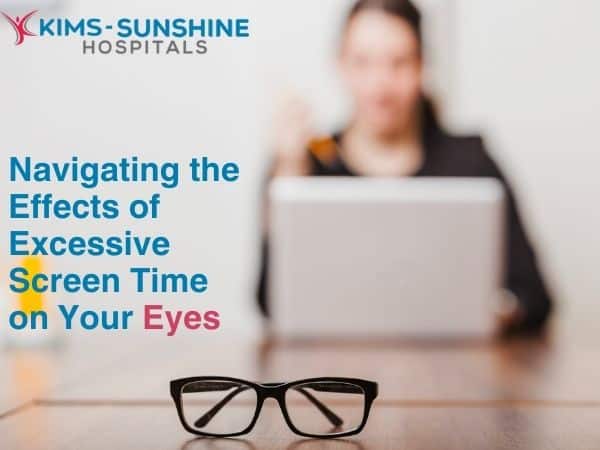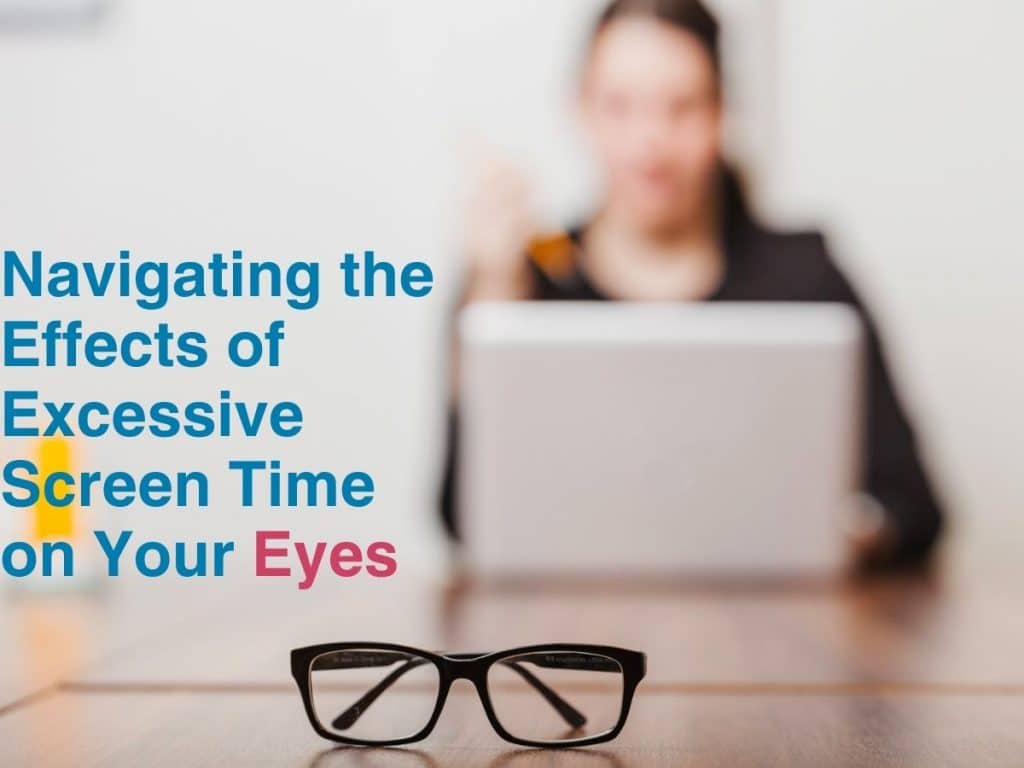
Navigating the Effects of Excessive Screen Time on Your Eyes

Screens are dominating our lives. No doubt. From smartphones to laptops to smart TVs, it almost seems like devices have taken over the world. But, it’s crucial to understand the impact of this digital immersion on our eye health. This
blog post will explore the effects of excessive screen time on your eyes, offering insights and practical tips to protect your vision in our increasingly digital world.
The Digital Eye Strain Epidemic
In the words of Dr. Christopher Starr, an ophthalmologist at Weill Cornell Medical College, “Digital eye strain is the number one computer-related complaint in the United States.” This phenomenon, also known as Computer Vision Syndrome
(CVS), affects millions of people worldwide. Symptoms of eye strain from excessive screen time include: – Dry, irritated eyes – Blurred vision – Headaches – Neck and shoulder pain – Difficulty focusing
The Science Behind Screen Time and Eye Health
How does screen time affect eye health, particularly in children? Children’s eyes are still developing, making them more susceptible to the effects of prolonged screen exposure. Studies have shown that excessive screen time in children
can lead to: – Increased risk of myopia (nearsightedness) – Delayed development of visual processing skills – Reduced blink rate, leading to dry eyes Dr. David Allamby, founder of Focus Clinic, warns: “If we don’t change our habits, we
could see an ‘epidemic of screen-sightedness’ in the coming years.”
Protecting Your Eyes: Tips and Tricks
To combat the negative effects of screen time, consider implementing these strategies:
The 20-20-20 Rule:
Every 20 minutes, take a 20-second break and look at something 20 feet away. This simple exercise can significantly reduce eye strain.
Adjust Your Screen Settings:
– Reduce blue light emission – Adjust brightness and contrast – Increase text size for easier reading
Optimize Your Workspace:
– Position your screen at arm’s length and slightly below eye level – Use proper lighting to reduce glare
Blink Frequently:
Conscious blinking helps keep your eyes lubricated.
Screen Time Recommendations for Healthy Eyes
While individual needs may vary, general guidelines for daily screen time include: – Children (2-5 years): 1 hour or less – Children (6+ years) and adults: No more than 2 hours of recreational screen time Remember, these guidelines
refer to non-work-related screen time. For those who use screens professionally, it’s even more critical to implement regular breaks and eye care strategies.
The Importance of Screen Breaks
Taking regular breaks from screens is vital for maintaining eye health. Use these breaks to: – Perform eye exercises (e.g., focus shifting, eye-rolling) – Get some physical activity – Engage in non-screen activities
Conclusion
As we navigate our digital world, it’s essential to be mindful of our eye health. By implementing these tips and being aware of the potential risks, we can enjoy the benefits of technology while protecting our vision. Remember, as
Ferris Bueller once said, “Life moves pretty fast. If you don’t stop and look around once in a while, you could miss it.” The same applies to our digital lives – don’t forget to give your eyes a break and look at the world beyond the
screen.
Frequently Asked Questions

Dr. Narahari Yamjala
MS (Ophthalmology)
Head of the Department
Sr. Consultant Cataract & LASIK Surgeon






